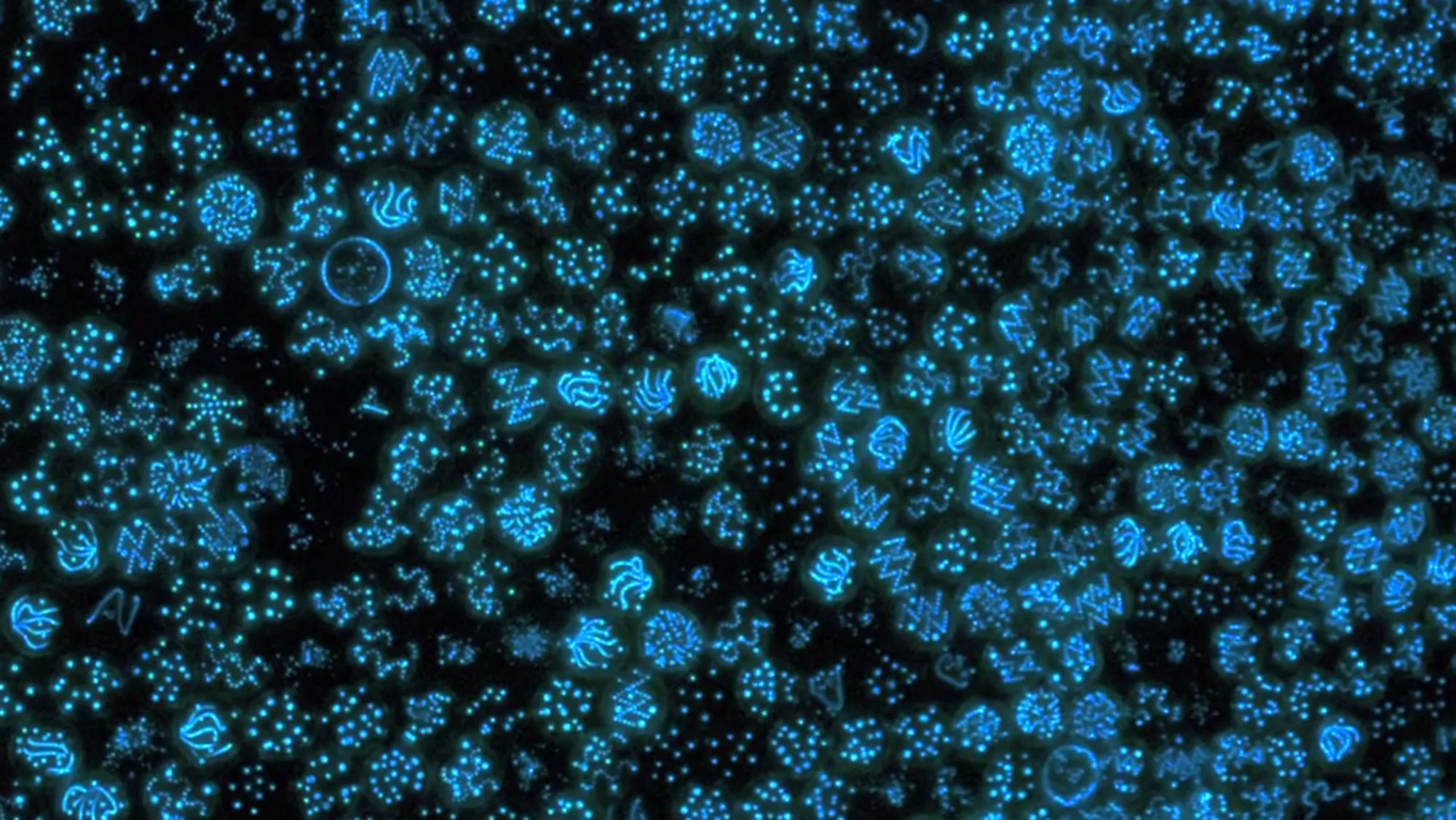Nature’s secret language: On quorum sensing and quenching
By Jake Robinson
Communication is vital to life, both in the observable macroscopic world and the unseen microscopic realm. Microbes are not solitary beings; instead, they interact in complex ways, using a system known as ‘quorum sensing’ to ‘talk’ to each other. Yet, despite the importance of a good conversation, there are moments when silence becomes equally salient. That's where ‘quorum quenching’ comes into play. Here I explore these fascinating concepts, which are shaping our understanding of bacterial behaviour and offering new avenues for combatting diseases and understanding ecosystem dynamics.
Quorum Sensing: The Language of Bacteria
Quorum sensing is a process of chemical communication that bacteria use to monitor their population density and coordinate their behaviour accordingly. This communication system relies on signal molecules known as ‘autoinducers’ that are detected by receptors on the cell surfaces of the bacteria. As the bacterial population grows, so does the concentration of autoinducers surrounding them. When a threshold concentration is reached, changes in gene expression occur, leading to coordinated behaviours across the bacterial community. As is the case in many human social or political situations, the collective impact of a group's response surpasses the influence of individual actions in terms of power and effectiveness.
These group-based behaviours can include biofilm formation, virulence factor production (molecules that enhance a microbe’s ability to cause disease), bioluminescence, sporulation, and more. This coordinated action allows bacteria to function almost like a multicellular organism, acting in concert to respond to environmental changes and increase their survival chances.
Take bioluminescence, for example. Bioluminescent bacteria in the genus Photobacterium possess the remarkable ability to generate light through the enzyme luciferase. When luciferase interacts with oxygen, it produces a captivating blueish glow. These bacteria engage in symbiotic relationships, coexisting harmoniously with various organisms in nature. For instance, the bacteria reside in the specialised organs of deep-sea fish, acting as a light switch when the fish floods the area with oxygen, stimulating light production via quorum sensing. This light aids the fish in communication and deception while the bacteria gain nutrients from their host. It's a mutually beneficial arrangement!
Understanding quorum sensing can help us control bacterial biofilms that cause diseases. But biofilms are also vital to many global ecosystems, providing habitat, food, and nutrient cycling functions. Understanding bacterial quorum sensing holds immense potential for ecosystem restoration. By comprehending how bacteria communicate and coordinate their actions based on population density, we might be able to influence these mechanisms to a degraded ecosystem’s advantage. For instance, we could potentially introduce specific bacteria capable of sensing and responding to the needs of the ecosystem. Through quorum sensing, these bacteria can initiate collaborative actions such as biofilm formation, pathogen protection, nutrient recycling, or pollutant degradation. By harnessing the power of bacterial communication, we might be able to enhance ecological processes, restore balance, and promote the recovery of ecosystems, ultimately leading to healthier and more resilient environments.
Quorum Quenching: Silencing the Conversation
If quorum sensing is the language of bacteria, then quorum quenching is the equivalent of hitting the 'mute' button. Quorum quenching refers to mechanisms that disrupt or inhibit quorum sensing, effectively blocking the communication between bacteria and preventing the coordinated behaviours that rely on this system.
There are several ways in which quorum quenching can occur. One method is through the enzymatic degradation of signal molecules, reducing their concentration and preventing them from reaching the threshold required to trigger changes in gene expression. Other methods might involve blocking the signal receptor sites on bacteria or producing molecules that mimic the signal molecules, which could interfere with the quorum sensing process.
Applications of Quorum Quenching
Understanding quorum sensing and quorum quenching has significant implications for human health and ecosystem functionality. Many pathogenic bacteria rely on quorum sensing to initiate infection, forming biofilms or producing virulence factors. By interfering with this process through quorum quenching, we may be able to develop new strategies for preventing or treating bacterial infections. For instance, Pseudomonas aeruginosa, a bacterium responsible for many hospital-acquired infections, uses quorum sensing to form biofilms and produce toxins. Quorum quenching strategies that disrupt these processes could provide a novel approach to combatting these infections.
A recent review suggested that a beneficial ‘superbug’, namely, Bacillus subtilis (a model bacterium that has many friendly functions!), produces quorum-quenching agents that can block the harmful effects of Staphylococcus aureus in mice and its colonisation in humans. Moreover, using quorum quenching instead of traditional antibiotics has an added advantage. Since quorum quenching targets communication instead of killing the bacteria or inhibiting their growth, it exerts less selective pressure for developing antibiotic resistance, a major global health concern.
The world of bacteria is full of chatter, with quorum sensing enabling these microorganisms to coordinate their behaviours and act as a community. But just as important as this bacterial ‘talk’ is the ‘silence’ brought about by quorum quenching. By learning to influence these processes, we could develop new ways to interfere with harmful bacterial behaviours and protect and enhance our invisible friends.
Even in the microscopic world, communication is key.
For more on our Invisible Friends, I have published a book: Invisible Friends: How Microbes Shape Our Lives and the World Around Us.




